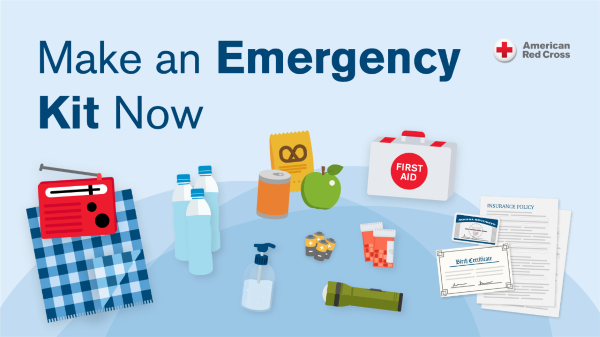
Emergency Preparedness is a critical component of Public Health. SWNPHD’s Emergency Preparedness program works to advance preparedness activities by working with local, state, and federal offices to prepare for and recover from a potential disaster.
The Emergency Response Coordinator works closely with other agencies, such as police, fire and rescue, emergency managers, schools, and elected officials to best serve and protect our citizens. Emergency Response activities include developing and testing plans for responding to disasters.
Some of the strategies and threats addressed in planning are:
>Early detection of disease
>Environmental safety
>Quarantine and isolation policies and procedures
>Bioterrorism
>Mass vaccination/dispensing of medical countermeasures
>Public risk communication with local, state, and federal partners.
>Mass medical care and surge
>Surveillance and epidemiology response
Emergency preparedness starts with you. Here are a few things you can do to help your family and community be prepared for an emergency.
Make a family disaster plan. The plan should be kept in a location that can be easily accessed by all family members. It should be reviewed and updated every six months or earlier if there are any major changes in the family. You can get more information on creating a Family Disaster Plan at https://www.ready.gov/plan.
Build a disaster preparedness kit. The kit should have at least 3 days’ worth of food, water and other supplies. The kit should include the following recommended items:
>Water (1 gallon per person der day for at least 3 days)
>Food (at least a 3 day supply of non-perishable food)
>Battery-powered radio and a NOAA Weather Radio
>Flashlight
>First aid kit
>Batteries
>Manual can opener
>Cell phone with charger
>Dust mask
>Plastic sheeting and duct tape (shelter in place)
>Moist towelettes, garbage bags and plastic ties (for personal sanitation)
>Whistle (signal for help)
>Wrench or pliers (to turn off utilities)
You can find a printable version of this checklist here (Ready Emergency Supply List)
Once you get the basic items, consider what unique items you might need for children, seniors, and pets.
After assembling your kit, decide on a designated location to store it that can be accessed quickly if you need to leave your home. Check your preparedness kit to make sure your emergency stockpile isn’t missing any items and that the food has not expired. Good rule of thumb is to check your stock when you set your clocks.

Volunteers are always needed to help others during and after a disaster happens.
Faith Based Organization Volunteers
The role faith-based organizations (FBO) will play in response to a disaster may be more valuable and effective than that of any government agency. They can be most effective if they are trained in disaster response and can integrate into the formal emergency response network before the disaster occurs. SWNPHD has offered our local FBOs several training courses and has a group organized to assist during a disaster response, but we are always looking for more volunteers to train and serve.
Nebraska Medical Reserve Corps Program (MRC)
MRC is a national network of local groups of volunteers committed to improving the health, safety, and resiliency of their communities. The Nebraska Medical Reserve Corps program strengthens communities by helping medical, public health and other volunteers offer their expertise throughout the year as well as during local emergencies and other times of community need. MRC volunteers work in coordination with local emergency response programs and supplement community public health initiatives, such as outreach, prevention, immunization programs, blood drives, case management, and other efforts.

Preparedness work groups are a valuable asset in keeping residents safe.
Long Term Care Work Group
Nursing homes and assisted living homes house one of the most vulnerable populations; their attention to preparedness is critical to the safety and wellbeing of their clients. Southwest Nebraska Public Health Department participates in a long-term care facility (LTCF) preparedness group run by the Nebraska Plains Healthcare Coalition, made up of all the nursing homes and assisted living facilities in the health district.
Business Continuity Work Group
SWNPHD provides resources and reviews plans with Business Continuity Management teams that work to safeguard their organization’s financial health and business reputation. It protects the interests and safety of its clients, patients, and key stakeholders by identifying potential impacts that threaten their organization and provides a framework for building resilience and capabilities for an effective response during and after a disaster.
24/7 Emergency Phone Number for Southwest Nebraska Public Health Department
308-340-3611
Disclaimer: This line is for emergencies only.
For all other calls please use the main office line (308-345-4223) and your call will be returned during regular office hours.

